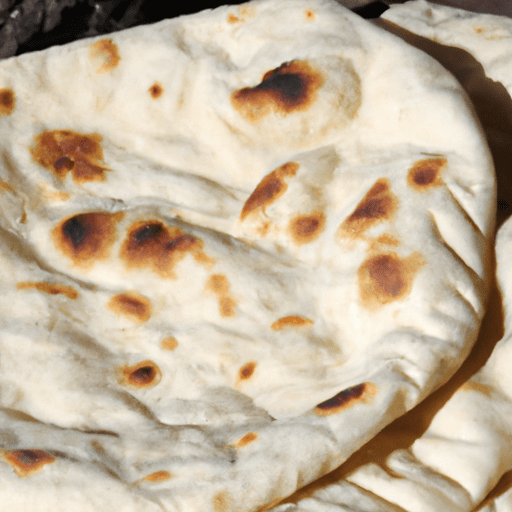The Irresistible Delight of Lavash: Unraveling the Secrets of this Ancient Flatbread
If you’re smitten with the tantalizing aromas and flavors of the Mediterranean and Middle Eastern cuisines, then you’ve surely come across lavash, the versatile and ancient flatbread that has been captivating food enthusiasts for centuries. With its delicate texture, subtle flavor, and incredible versatility, lavash holds a special place in the hearts and on the plates of people worldwide. In this blog post, we will delve into the fascinating world of lavash, exploring its taste, common culinary uses, nutritional value, and uncovering some interesting historical facts along the way.
Unveiling the Unique Taste
Lavash, also known as “cracker bread,” boasts a delectable taste that perfectly complements a wide array of dishes. This unleavened bread is characterized by its thin and pliable texture, which contributes to its popularity as a versatile wrap or a base for various culinary creations. When roasted, lavash develops a delightful crispness, transforming it into an irresistible edible canvas for flavors.
A Multitude of Culinary Possibilities
Lavash is an incredibly versatile flatbread that can be used in numerous ways to elevate your dining experience. Here are a few popular culinary uses for lavash:
1. Wraps and Rolls
Lavash shines brightly as the foundation for wraps and rolls, making it an ideal choice when assembling mouth-watering sandwiches. Simply layer your favorite combinations of meats, vegetables, spreads, and sauces onto a sheet of lavash, then roll it up tightly for a satisfying handheld feast.
2. Dips and Dippers
Transform lavash into crunchy dippers that beautifully complement your favorite dips. Cut the bread into smaller pieces, bake until golden brown, and serve alongside creamy hummus, savory tzatziki, or tangy salsa. These homemade dippers are guaranteed to be a hit at parties or as a delectable snack any time of day.
3. Pizzas and Tartines
Why settle for ordinary pizza crust when you can use lavash as a delightful and healthier alternative? Effortlessly create thin-crust lavash pizzas by topping them with your preferred sauce, cheese, and a medley of fresh vegetables or savory meats. And if you’re feeling slightly more sophisticated, lavash can be transformed into a rustic tartine by layering it with cream cheese, smoked salmon, and fresh dill.
Nutritional Value and Benefits
Beyond its taste and versatility, lavash brings some notable nutritional benefits to the table. While the precise nutritional composition may vary depending on specific brands and recipes, lavash generally includes the following:
- Fiber: Lavash is typically high in dietary fiber, promoting healthy digestion and helping to regulate blood sugar levels.
- Protein: This flatbread contains a moderate amount of protein, which is essential for building and repairing tissues in our bodies.
- Minerals: Lavash is a source of various minerals, including iron, magnesium, and selenium, all of which play crucial roles in maintaining optimal health.
- Low in Fat: Compared to many other bread options, lavash tends to be lower in fat, making it a suitable choice for those seeking a lighter alternative.
A Glimpse into Lavash’s Past
Lavash not only holds a treasured place on modern dining tables but also tells a captivating story of ancient culinary traditions. This flatbread has roots dating back thousands of years and holds deep cultural significance in regions like Armenia, Turkey, Iran, and Iraq.
Historically, lavash was made by skilled breadmakers who would skillfully stretch and twirl the dough, creating large, paper-thin sheets before baking them in a hot, stone-lined oven. The making of lavash was often a communal activity, fostering a sense of togetherness and cultural pride.
Lavash remains a cherished tradition even today, and its inclusion on UNESCO’s Intangible Cultural Heritage List in 2016 stands as a testament to its enduring cultural significance.
Conclusion
Lavash, with its delicate flavor, versatile nature, and rich history, invites us to explore the vibrant world of Mediterranean and Middle Eastern cuisine. From tantalizing wraps to crispy dippers and beyond, this ancient flatbread delights our taste buds and adds a touch of authenticity to every culinary creation. So, whether you’re an aspiring home cook or a seasoned food enthusiast, don’t hesitate to embrace the magic of lavash and experience the wonders it brings to your table.
Interesting Facts About Lavash:
Origin: Lavash is a traditional unleavened flatbread that originated in the countries of the South Caucasus and Western Asia. It is widely consumed in countries such as Armenia, Iran, Azerbaijan, Turkey, and Georgia.
Common Uses: Lavash is a versatile bread that has many uses. It is commonly used as a wrap to make sandwiches or to roll up various fillings, such as meats, vegetables, and cheeses. It can also be toasted and used as a chip-like snack or dipped into sauces and spreads.
Nutritional Benefits: Lavash is a good source of carbohydrates and dietary fiber. It is relatively low in fat and contains no cholesterol. Lavash can be made with whole wheat, further increasing its nutritional value by adding additional fiber and nutrients.
Unique Properties: One of the unique properties of lavash is its light and thin texture. It is typically rolled out into large, thin sheets and cooked quickly at a high heat, resulting in a bread that is crispy on the outside and chewy on the inside. Lavash can be made in different sizes, ranging from small sheets to large ones that can be several feet long.
Historical Significance: Lavash has a long history and holds cultural significance in the regions where it is consumed. In 2014, the traditional Armenian flatbread “lavash” was inscribed on the UNESCO Representative List of the Intangible Cultural Heritage of Humanity. This recognition highlights the importance of lavash in the culinary heritage of the region and its role in community identity and social occasions.
Please note that while lavash is commonly enjoyed in many regions, specific variations of the bread and its cultural significance may vary between countries and communities.




Use the share button below if you liked it.
It makes me smile, when I see it.